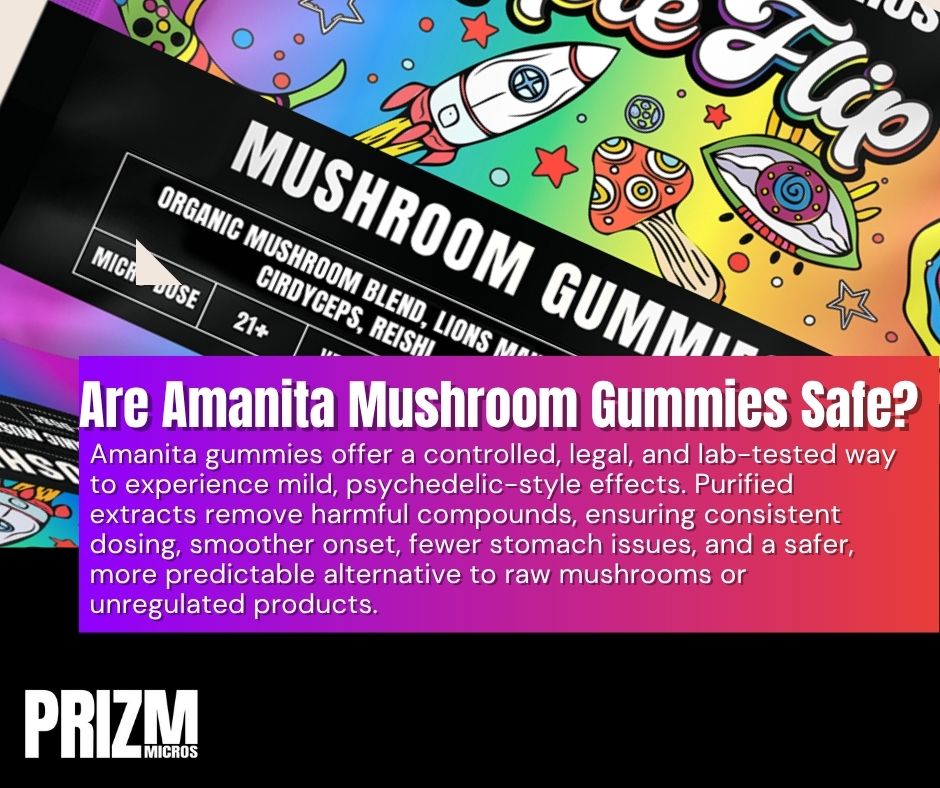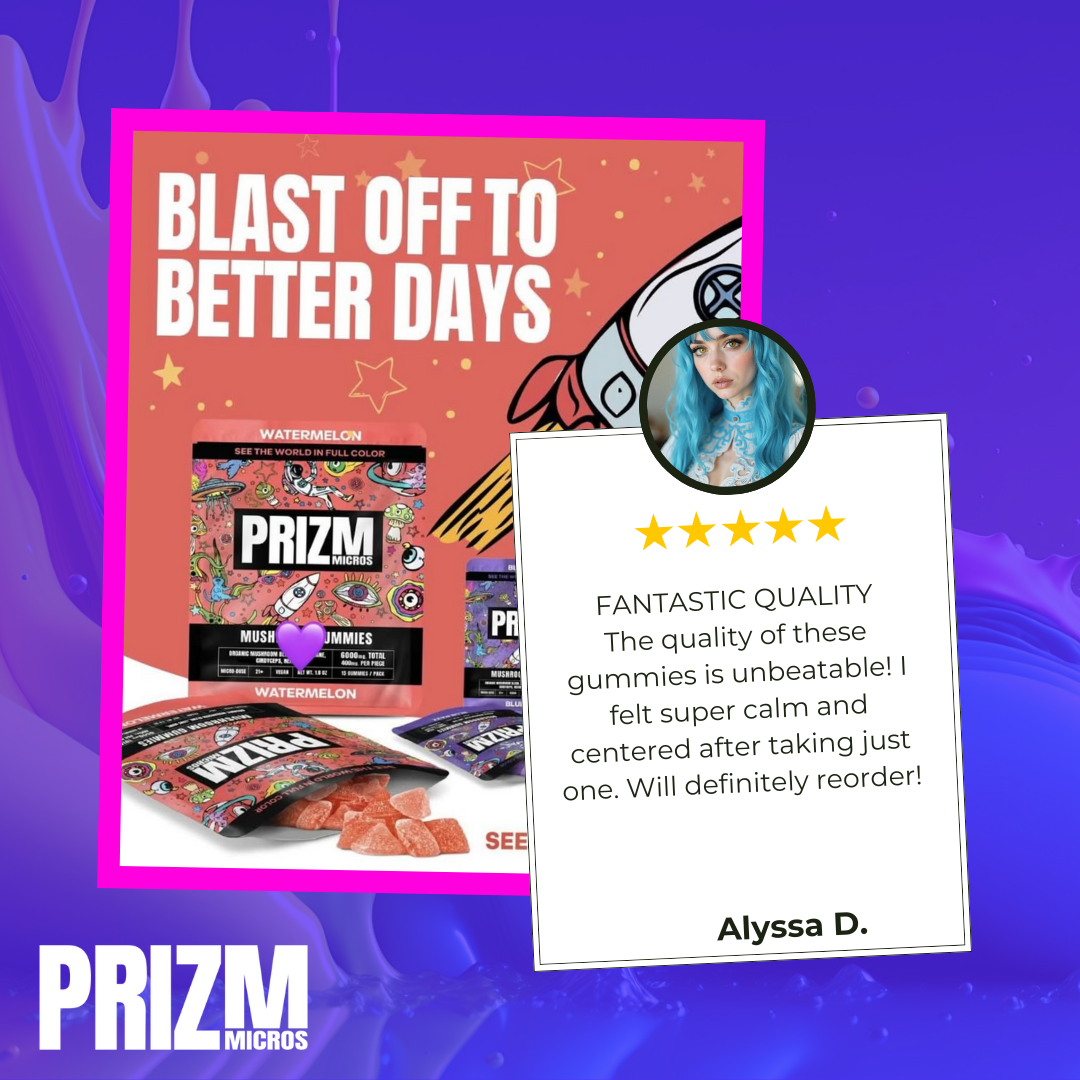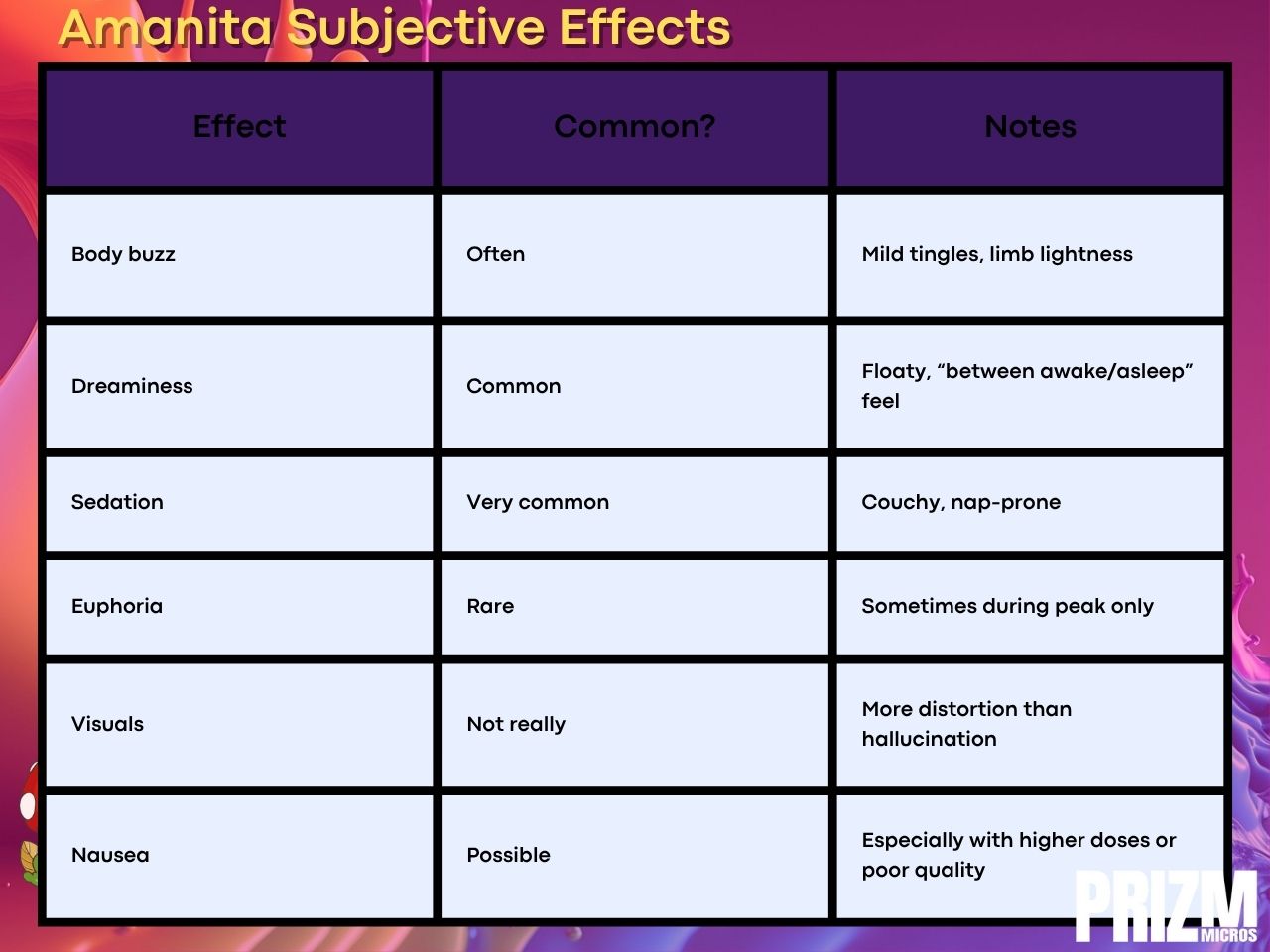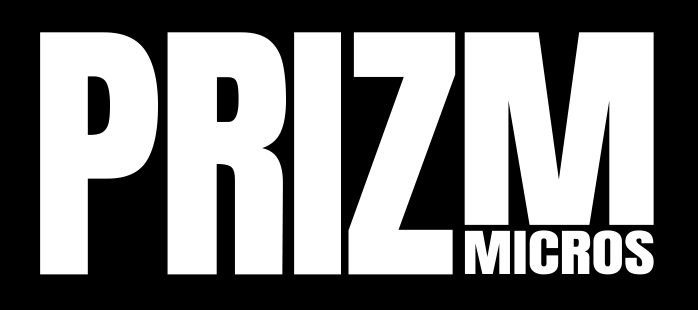Are Amanita mushroom gummies safe?
Amanita mushroom gummies can be safe when made by reputable brands that use muscimol extract, provide third-party lab testing, and clearly label dosing. However, unregulated gummies may contain ibotenic acid, unknown fillers, or misleading labels, which can lead to side effects like nausea, confusion, or toxicity. Always check for lab-tested, clearly dosed products before trying Amanita gummies.
Quick Facts: Are Amanita Mushroom Gummies Safe?
- Q: Are Amanita mushroom gummies safe to consume?
A: They can be, if they’re lab-tested and clearly labeled for muscimol content. Unregulated products may be dangerous due to ibotenic acid or mislabeling. - Q: Do Amanita gummies contain psilocybin?
A: No. They contain muscimol, a different psychoactive compound found in Amanita muscaria, not psilocybin. - Q: What are the common side effects of muscimol?
A: Drowsiness, confusion, nausea, and body heaviness. High doses may cause hallucinations or toxicity. - Q: How do I know if my Amanita gummies are safe?
A: Look for third-party testing (COAs), clear muscimol dosage, and transparent sourcing. Avoid “proprietary blend” labels without lab results. - Q: Are Amanita gummies legal?
A: Generally, yes, federally, but legality can vary by state. Always check local laws.
Are Amanita Mushroom Gummies Safe?
Built for vibes, backed by science, unless they’re not.

Let’s cut the fluff: there’s a reason Amanita mushroom gummies are lighting up TikTok and triggering poison control calls. People want the buzz without breaking the law, but what they’re actually getting is often murky at best, risky at worst.
I’m Brent Walker, co-founder of Prizm Micros. After 15+ years building cannabis and wellness brands (and plenty of trial-and-error with legal mushrooms), I’ve seen the rise of Amanita muscaria firsthand, from ancient folklore to sketchy gas station gummies.
And if you’re asking, “Are these things actually safe?”, you’re not alone.
In this guide, I’ll break down what’s really inside these trending red-cap treats, why legality doesn’t always equal safety, and how to navigate the hype without ending up nauseous, disappointed, or worse. Whether you’re microdosing, experimenting, or just mushroom-curious, this is your real-world primer on Amanita safety, no fearmongering, no corporate spin.
Understanding Amanita Mushrooms and Their Compounds
First things first, Amanita muscaria is not your average “magic mushroom.”
Unlike psilocybin mushrooms, which are illegal at the federal level and show up in drug education slideshows, Amanita’s active ingredients are muscimol and ibotenic acid. These compounds don’t affect serotonin like psilocybin does; they work on GABA receptors, which can create a dreamlike, sedative, sometimes euphoric effect that feels more like dissociation than visuals.
That’s why some people say it feels “weird, not high.”
Now here’s the kicker: ibotenic acid is technically a neurotoxin. But when it’s decarboxylated (through heat or processing), it converts into muscimol, the compound responsible for Amanita’s effects. So the safety of these gummies hinges on how well that conversion is done, and spoiler alert: most sketchy brands don’t do it well.
At Prizm, we knew muscimol could be used safely if it was precisely extracted, accurately dosed, and paired with functional stacks like Lion’s Mane. But that’s not what you’re getting with random online gummies promising “legal shrooms.”
FDA Warnings, Legality, and What That Means for You
Here’s the wild part: Amanita muscaria is legal in most U.S. states because it’s not classified as a controlled substance. But legal doesn’t mean approved. The FDA has already issued warning letters to some mushroom gummy companies for mislabeling, safety violations, and selling unapproved “dietary supplements” containing muscimol.
Translation? Just because you can legally buy it doesn’t mean it’s clean, tested, or safe to eat.
The problem is that a lot of companies rushed into the Amanita space thinking they could slap “legal shrooms” on a label and cash in. Some don’t test for muscimol content. Others leave behind too much ibotenic acid. Some just sell you sugary gelatin with barely-there effects.
That’s why the “legal loophole” crowd is giving Amanita a bad name, and why we took the hard route at Prizm, creating a custom extract that’s consistent, lab-tested, and compliant with evolving regulations.
Because let’s be honest: legal doesn’t mean lame, but it should mean safe.
Common Side Effects, Overdose Risks, and What Social Media Won’t Tell You
Let’s talk straight, Amanita isn’t your average mushroom, and muscimol doesn’t behave like psilocybin.
Some folks expect a visual trip and end up disappointed. Others go in blind and wind up way too sedated. Social media is full of stories like:
“Felt nothing for 90 minutes… then I melted into my couch and couldn’t move.”
Why? Because muscimol is a GABAergic compound, it acts more like a hypnotic or sedative than a serotonergic psychedelic. At low doses, it might bring calm and clarity. At high doses? Confusion, nausea, tremors, vomiting, sleepwalking, even seizures.
Here’s what the science says:
- Too much ibotenic acid = nausea and neurotoxicity
- Too much muscimol = intense dissociation, blackouts, or lingering brain fog
- No standardization = unpredictable reactions
Overdoses do happen. Most aren’t fatal, but ER visits aren’t unheard of, especially with unregulated products. And since some brands skip testing entirely, you could be swallowing way more than you think.
At Prizm, we created a unique extract that removes excess ibotenic acid and stabilizes muscimol levels, so you feel something meaningful without going sideways.
Because you deserve snackable psychedelics that don’t leave you guessing, or regretting.
How to Spot Safe Amanita Gummies (and Brands to Avoid)
Not all Amanita gummies are created equal. And sadly, most of what’s flooding the market right now is sketchy at best, dangerous at worst.
Here’s how to protect yourself:

Signs of a Safe, Legit Product
- COAs (Certificates of Analysis): If a brand doesn’t provide third-party lab results showing muscimol levels and absence of ibotenic acid, walk away.
- Clear Dosing Info: You should see precise milligrams per gummy, not vague terms like “full spectrum.”
- Transparent Ingredients: No mystery “mushroom blend.” No weird synthetics. Real ingredients, clearly listed.
- Functional Synergy: Brands that combine Amanita with Lion’s Mane, Reishi, or Cordyceps (like we do) typically show more safety-conscious formulation practices.
- Legal Disclosure: If a brand’s playing coy about legality or sourcing, that’s a red flag.
Red Flags to Watch For
- “Magic Mushroom Gummy” with zero detail = likely psilocybin-laced or fake.
- Products with zero reviews, no brand contact, or hosted on pop-up shop sites.
- Wild claims like “guaranteed to make you trip” or “15x stronger than LSD” (not only false, could be laced or misbranded).
- No mention of muscimol or ibotenic acid, only vague “Amanita mushroom extract.”
Bottom line: If you wouldn’t eat sushi from a gas station, don’t chew on mystery mushrooms from one either.
Prizm? Every batch of our gummies is third-party tested, transparently labeled, and dialed to give you clarity, creativity, or calm, without the chaos.
Real Effects: What Amanita Gummies Actually Feel Like (vs Expectations)

Let’s bust the biggest myth right up front: Amanita isn’t psilocybin. If you’re expecting vivid visuals or a spiritual ego death, you’re gonna be confused, and probably disappointed.
What Muscimol Feels Like
Muscimol, the active compound in Amanita, has a unique mechanism. It doesn’t bind to serotonin receptors like psilocybin. Instead, it works on GABA (your brain’s chill-out system). That means:
- Sedation, calm, or “floaty” body feel
- Dreamy thinking (sometimes with surreal or dissociative edges)
- Mild euphoria or introspection
- Occasional visual distortions at high doses (think “melty,” not “melting into the fabric of existence”)
For many users, especially at micro- or low doses, it’s subtle, calming, and mentally loosening, like turning the volume down on the noise in your head.
What It’s Not
- It’s not fast; effects can take 30–90 minutes to kick in.
- It’s not linear; you might feel groggy before uplifted.
- It’s not predictable; every batch, brand, and brain reacts differently.
- And it’s definitely not for driving, operating machinery, or figuring out taxes.
Bonus Insight: Amanita + Functional Mushroom Blends
We’ve found that stacking muscimol with functional mushrooms like Lion’s Mane creates a unique synergy: the GABA-induced calm of Amanita with the brain-boosting clarity of nootropics.
That’s why our gummies are blended, not just for vibes, but for actual function.
Muscimol vs. Ibotenic Acid: What You’re Actually Ingesting
Most people don’t realize this, but when you eat an Amanita mushroom gummy, you’re not just consuming muscimol; you might also be getting ibotenic acid, and that matters a lot.
What’s the Difference?
- Ibotenic Acid is the raw, naturally occurring compound in Amanita muscaria. It’s known to be neurotoxic in high amounts and can cause nausea, confusion, and motor disturbances.
- Muscimol is what you want; it’s the decarboxylated version of ibotenic acid. Muscimol is responsible for the calming, dreamy effects and is significantly less toxic.
Why This Matters for Gummies
Safe brands go the extra step to decarboxylate ibotenic acid into muscimol during production. But not everyone does. If your gummy hasn’t been heat-treated properly, you might be getting more of the sketchy compound and less of the good stuff.
Look for This on the Label
- Lab testing for muscimol concentration
- No “ibotenic acid” listed, or very low traces
- A brand that discloses their heat treatment or decarb process
Ibotenic acid = the risky stuff. Muscimol = what you want. Don’t settle for a gummy that skips the science.
The Legality Landscape: What ‘Legal’ Really Means for Amanita
So, are Amanita mushroom gummies actually legal? Yes, and no. Here’s the deal.
Federally Legal… Technically
Amanita muscaria isn’t classified as a controlled substance under the U.S. federal Controlled Substances Act. That means it’s technically legal to possess, buy, or sell, as long as you’re not making medical claims or selling it for consumption in certain states.
But here’s the nuance: “Legal” doesn’t mean safe, approved, or consistent. And legality changes depending on your state.
State-by-State Reality Check
- Banned or Restricted: Louisiana (for human consumption), Australia, Thailand
- Gray Area: Florida, New York, and California may restrict based on local law interpretations
- Generally Permitted: Most other U.S. states, but labeling laws may still apply
What the FDA Says
The FDA does not recognize Amanita muscaria as GRAS (Generally Recognized As Safe). They’ve even issued warnings against companies making health or therapeutic claims. No official dosing standard exists.
Bottom Line
- Legal =/= FDA approved
- Legal =/= Safe for all users
- Always check your state’s laws and the brand’s COA (Certificate of Analysis)
Just because something’s legal doesn’t mean it’s clean, consistent, or chill. Look deeper than the marketing buzzwords.
Real Side Effects: Nausea, Numbness, and Other Surprises
Let’s talk about what nobody tells you on the packaging. Amanita mushroom gummies can hit different, and not always in a good way.
Common Side Effects (Even at Low Doses)
- Nausea or stomach cramping (especially if the ibotenic acid isn’t fully converted)
- Salivation and sweating
- Fatigue, muscle twitching, or slight tremors
- Confusion or dreamlike disconnection
These aren’t rare; they’re reported all over social media and trip forums, even from folks who took “micro” doses.
At Higher Doses or Poorly Processed Products
- Intense vomiting or diarrhea
- Temporary paralysis or slurred speech
- Hallucinations that feel more dissociative than visionary
- Feeling stuck “between worlds”, disconnected but not euphoric
Why Does This Happen?
The culprit is ibotenic acid, which needs to convert to muscimol through proper heating or drying. If your gummy brand doesn’t properly decarboxylate the raw Amanita, you’re basically eating the rough stuff. Think nausea, not nirvana.
Pro tip: Look for brands that specify “decarboxylated muscimol” or show lab results with ibotenic acid levels below detectable limits.
It’s Not Like Psilocybin
People expecting colorful visuals or spiritual clarity often end up disappointed, or worse, queasy and confused. Muscimol hits GABA receptors, not serotonin. That means sedation and dreamy states, not “trippy euphoria.”
How to Decode Labels, Lab Results & COAs (Without a Chemistry Degree)
If you’re holding an Amanita gummy in your hand and wondering, “Is this legit or lowkey dangerous?”, this section’s for you.
What to Look for on a Label
- Muscimol Content (mg): Should be clearly stated per gummy or serving.
- Zero Psilocybin or Psilocin: If these show up, the product may be illegal or mislabeled.
- Ibotenic Acid Levels: Ideally, the product should list “< LOQ” (below the limit of quantification).
- Functional Stacks: Ingredients like Lion’s Mane or Reishi are safe additions and show care in formulation.
- COA (Certificate of Analysis): This proves lab testing and should be easy to find via QR code or brand site.
Red Flags
- No mention of muscimol or ibotenic acid
- Buzzword-only labels like “psychedelic mushroom blend”
- Proprietary formula” with zero breakdown
- Wild dosing claims like “500mg Amanita muscaria extract” (without muscimol detail)
- No batch number or lab date
How to Read a COA (Even If You’re Not a Chemist)
- Look for a lab name and date; no date = no trust.
- Check the compound line for “Muscimol”, should be clearly detected.
- If ibotenic acid is still present in high levels, walk away.
- Confirm the test covers heavy metals, microbes, and pesticides.
Reminder: “Natural” doesn’t mean clean. Mushrooms grow in dirt. If a company doesn’t test for contaminants, they’re gambling with your gut.
What’s a Safe Amanita Dose for Beginners? (And When to Steer Clear)
Not all Amanita gummies are built the same, and neither are your brain receptors.
Typical Dose Ranges (by Muscimol Content)

These are guidelines, not guarantees. Everyone processes muscimol differently depending on gut health, sleep, and even hydration.
Beginner Safety Tips
- Start with half a gummy if muscimol isn’t clearly stated.
- Never mix with alcohol or benzos (both increase sedation).
- Wait 2–3 hours before re-dosing; it comes on slow but can stack.
- Avoid if you’re on sleep meds, SSRIs, or immunosuppressants.
- Never take around kids or pets, muscimol can be toxic to animals.
Pro tip: If you want the calming, creative uplift without the wildcard effects, look for legal tryptamine stacks instead. That’s what we built PRIZM for.
How Amanita Feels: The Real Effects
Let’s clear up the trip-fog: Amanita doesn’t feel like psilocybin, and it’s not supposed to.
The Muscimol Experience:
- Onset: 45–90 minutes (faster on empty stomach)
- Peak: 2–4 hours in
- Come-down: Gentle fade, often sleepy
Subjective Effects People Report:

Why It Feels “Weird” to Some People
- Muscimol acts on GABA-A receptors, not serotonin. That’s more like a chill pill than a cosmic elevator.
- It’s not about visuals or insight; it’s about softening the edges, emotionally and physically.
If your gummy is properly made and dosed, it might feel like:
“A lucid dream crossed with a sleepy Sunday, not a rave or revelation.”
Why “Legal” Doesn’t Automatically Mean Safe (And What the FDA Thinks)
Just because Amanita muscaria isn’t banned doesn’t mean it’s automatically safe to eat, especially in gummy form.
What Makes Amanita “Legal” in Most States?
- Not scheduled under the Controlled Substances Act
- Muscimol is psychoactive, but not classified like psilocybin
- Legal loophole = no FDA approval needed
But here’s the kicker…
FDA Position:
- In December 2023, the FDA issued a consumer warning against Amanita mushroom gummies.
- Reason? Unapproved ingredients + potential health risks.
- Some gummies were linked to hospitalizations due to:
- Overdose
- Contaminants
- Inconsistent labeling
“Legal doesn’t mean lame, but it doesn’t mean safe by default either.”
Risks When Brands Skip Safety:
- No lab testing = risk of ibotenic acid (which is toxic in high amounts)
- No dose standardization = one gummy might sedate you, one might do nothing
- No transparency = just a trippy label and vibes marketing
That’s why at Prizm, we back up our “snackable psychedelics” with actual science. Lab testing, precise dosing, no BS.
Red Flags to Watch for on Amanita Gummy Labels
If you’re standing in a headshop or scrolling a flashy product page, wondering, “Is this legit?”, pause. Here’s what to look out for before you pop an Amanita gummy:
1. No Mention of Muscimol Dosage
- Legit products will tell you how much muscimol is in each gummy (e.g., 2.5mg).
- No dose listed = walk away.
2. No Certificate of Analysis (COA)
- This is the bare minimum.
- COAs should show:
- Muscimol content
- Absence of ibotenic acid (the toxic one)
- Contaminant screening (heavy metals, microbes)
- No QR code, no link, no lab? That’s a red flag.
3. Over-the-Top Claims
- If the label promises “psychedelic trip,” “intense visuals,” or “legal high,” be wary.
- Real Amanita experiences aren’t LSD 2.0, and good brands don’t need hype.
4. Ambiguous Ingredients
- “Proprietary blend,” “mushroom extract,” or “magic mushroom complex” ≠ transparency.
- You deserve to know what’s going into your body.
5. No Contact Info or Brand Story
- A faceless product with no social presence or sourcing info? Pass.
- If you can’t find the people behind it, chances are they can’t be held accountable.
How Prizm Does It Differently (Without the Sketch Factor)
At Prizm, we didn’t just throw Amanita into a gummy and call it a day. We built an entirely different experience, because legal doesn’t mean lame, and “natural” doesn’t mean “guess and hope.”
Here’s how we make sure our Amanita-infused gummies are safe, consistent, and actually enjoyable:
Precision-Dosed Muscimol
We use purified muscimol, not raw Amanita powder. That means:
- No ibotenic acid risk
- Doses dialed in to the milligram
- Predictable onset and duration
Full COA Transparency
Every batch comes with third-party lab testing. You’ll see:
- Muscimol potency
- Functional mushroom synergy profiles (Lion’s Mane, Cordyceps)
- Cleanliness: zero toxins, microbes, or mystery fillers
Synergistic Stacks That Make Sense
We don’t just chase trippy vibes. We design stacks for:
- Clarity & calm (Lion’s Mane + low-dose muscimol)
- Mood & micro-shifts (Cordyceps + adaptogens)
- Sleep & reset (Reishi + dream-enhancing blend)
Built by People Who Actually Use This Stuff

We started PRIZM after seeing too many “psychedelic” products that were weak, sketchy, or flat-out mislabeled. Our mission is simple: create a safe, legal, and consistent way to boost mood, focus, and creativity. Snackable psychedelics, because the future is functional, fun, and trustworthy.
Conclusion: So… Are Amanita Gummies Safe or Not?
Here’s the truth: Amanita mushroom gummies can be safe, but only if you know what you’re buying. The compound muscimol isn’t inherently dangerous, but mislabeling, contamination, and ibotenic acid make many products risky.
That’s why we built Prizm, to take the guesswork out. Our gummies are:
- Precisely dosed
- Third-party tested
- Crafted with clean, legal compounds
- Stacked with functional mushrooms for clarity, calm, and mood
So if you’re Amanita-curious but safety-conscious, know this: you don’t need to roll the dice with sketchy gummies. There’s a better way, one for focus, two for flow, three if you’re feeling bold.
Because when it’s built for vibes and backed by science, you can elevate daily life without compromise.
Disclaimer
This content is for informational and educational purposes only. It does not constitute medical advice and is not intended to diagnose, treat, cure, or prevent any disease. Always consult your healthcare provider before trying any new supplement, especially those containing psychoactive compounds. Amanita muscaria and muscimol may carry legal and health risks depending on local laws and individual sensitivities. Prizm Micros products are compliant with applicable regulations and do not contain psilocybin.
Citations
- U.S. Food & Drug Administration (FDA), Warning on Psychoactive Mushroom Products
- National Institutes of Health (NIH), Muscimol and Ibotenic Acid Pharmacology
- DoubleBlind Magazine, Amanita muscaria vs Psilocybin: What’s the Difference?
- Psychedelic Spotlight: Understanding the Safety Profile of Legal Mushrooms
- Third Wave, Amanita muscaria: Legal Status and User Guidelines



